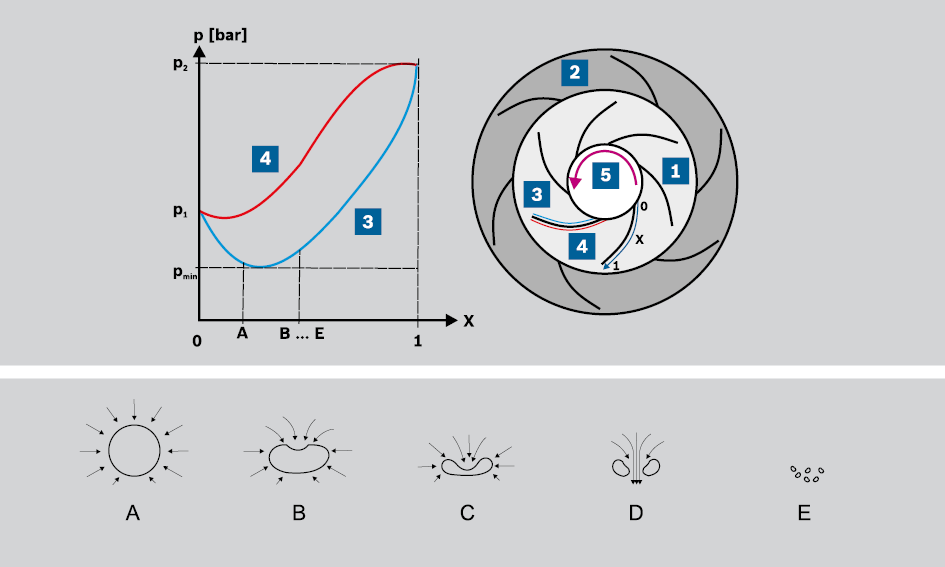Water lines
Pressure line
On the whole, there are no special characteristics to observe in the case of pressure lines. Occasionally a flow speed of ≤ 5m/s is acceptable in short sections of pipework, providing other measures are taken to exclude the danger of water hammer.

|
Water hammer Water hammer particularly occurs when closing valves in pipework carrying liquid. Deceleration of the moving water column and low compressibility of liquids causes pressure peaks due to the so-called “Joukowski surge”. Heavy water hammer can be reduced or avoided altogether by increasing the valve closing time and reducing the flow speed. If electrically-actuated valves (closing time normally > 30 seconds) are used and the recommended pipework speeds are complied with, no unacceptably high-pressure peaks due to water hammer will occur. Tab. "Standard design speeds (recommended speeds) for pipework sizing" |
Suction line
Pipes on the inlet side of pumps are referred to as suction lines. In this case, it is particularly important to ensure that the pressure loss is low to avoid possible cavitation at the pump. This is particularly relevant for pipes in which hot water is transported slightly below the boiling point (e.g. water from feed water vessels or condensate tanks). This pipework is sized for a low flow speed and is kept as short as possible (a few metres) to minimise pressure losses.

|
Cavitation Cavitation (latin: cavitare = hollow out) occurs as a result of the formation and breakdown of small steam bubbles in liquids. Steam bubbles occur in locations where the static pressure is low, such as behind impellers in centrifugal pumps. If the static pressure falls below the steam pressure of the liquid, bubbles form and implode shortly afterwards. When this happens, a water jet is produced that strikes the pump blade at a very high speed. Due to the high compressive stresses involved, the material initially hardens and subsequently flakes off thus forming irregular holes in the blades which continue to erode and ultimately destroy the impeller. The so-called NPSH (Net Positive Suction Head) value of a centrifugal pump specifies the required upstream head of boiling water to prevent cavitation occurring at the impellers. Feed pumps of steam boilers are normally equipped with “Low-NPSH” pumps which only require an upstream head of roughly 0.4 – 1.2m in the operating range. |
Each pump should have its own pipework to prevent reciprocal affects.

Cavitation – flow along pump impeller blade and collapse of gas bubbles
|
|
Impeller |
|
Suction side, impeller |
|
Rotational direction |
||
|
|
Guide wheel |
|
Pressure side, impeller |
||||
|
A |
Single bubble |
C |
Collapsing gas bubble |
E |
Collapsed gas bubble |
||
|
B |
Start of flattening |
D |
Microjet |




